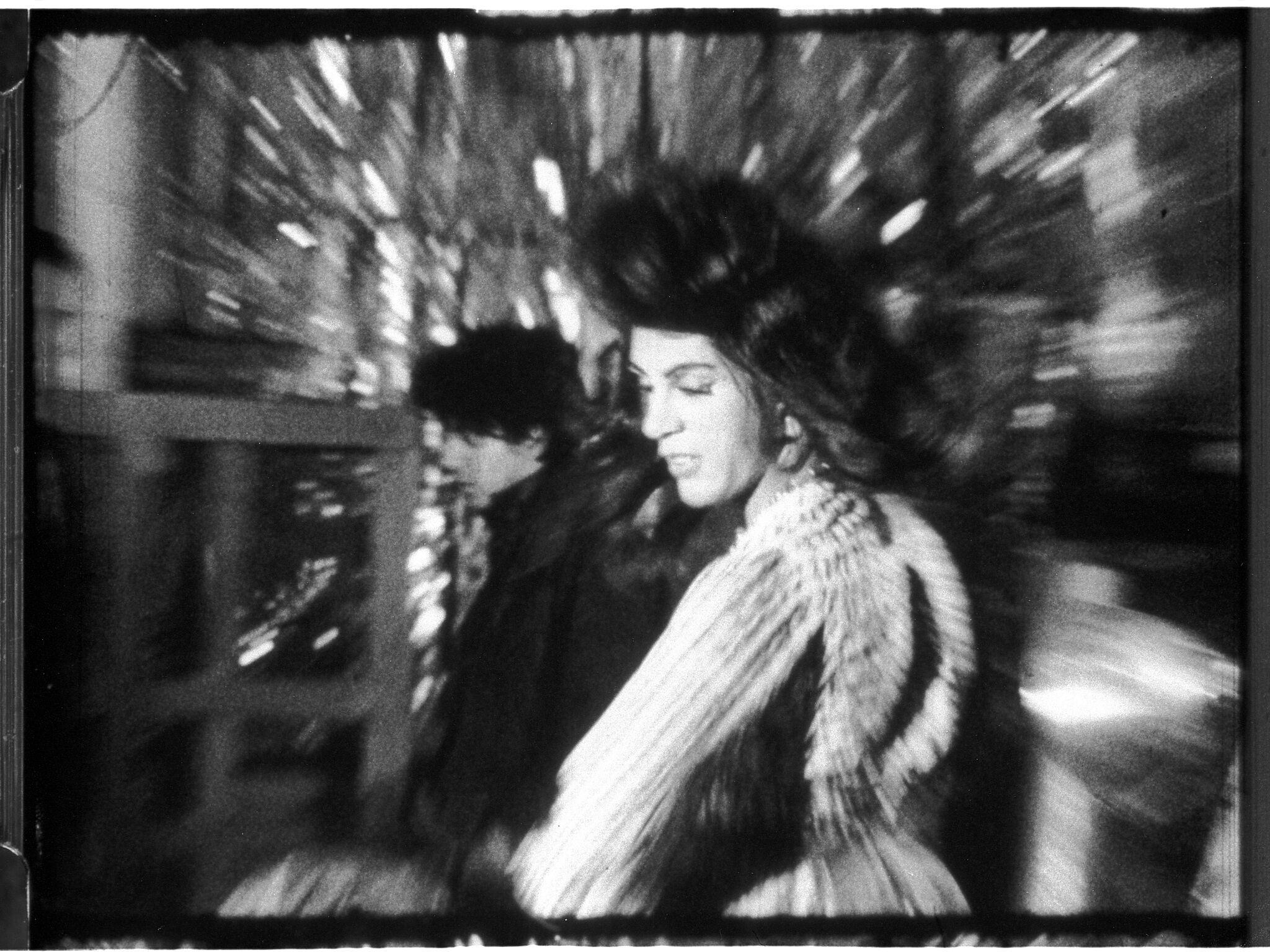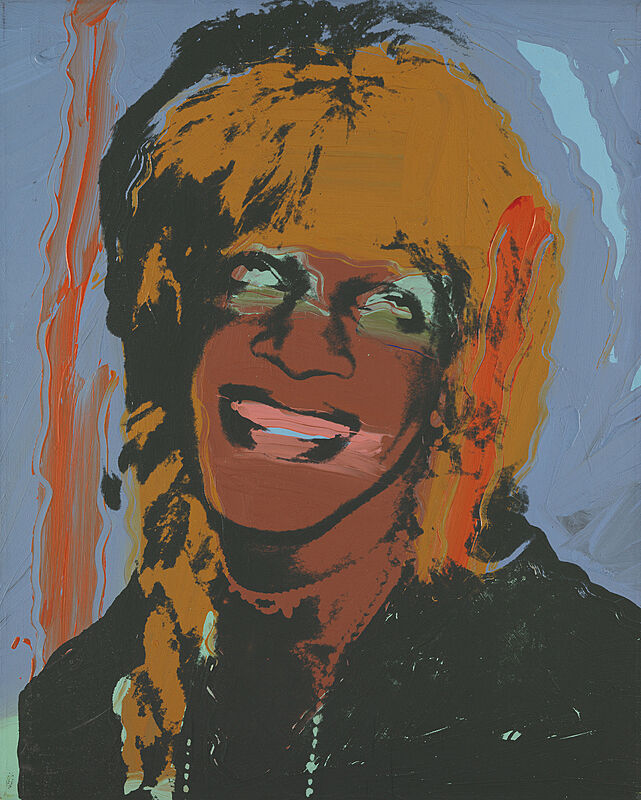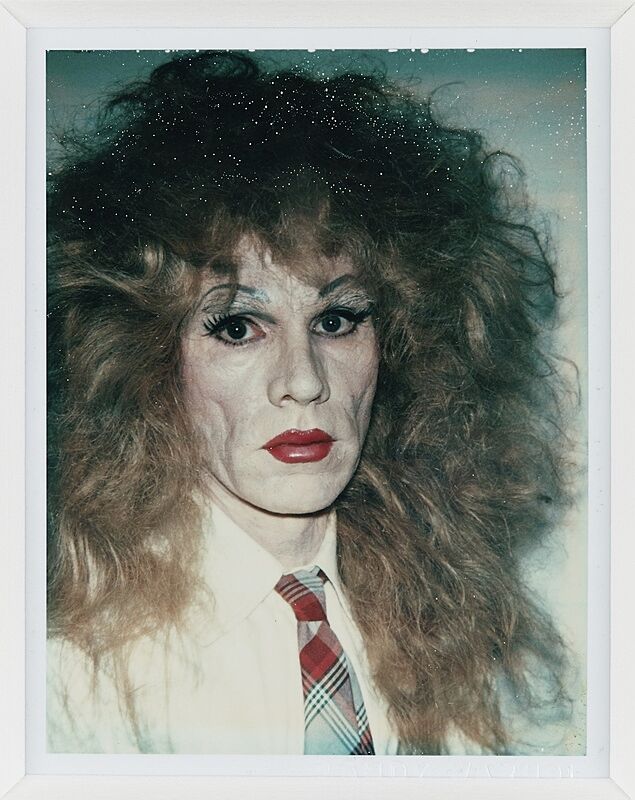Andy Warhol— From A to B and Back Again | Art & Artists
Nov 12, 2018–Mar 31, 2019
Andy Warhol— From A to B and Back Again | Art & Artists
Ladies and Gentlemen
13
In the series Ladies and Gentlemen (1975), which depicts New York City drag queens and trans women, Warhol engaged more explicitly with drag and the performance of queer identity than in any other paintings he had made since the 1950s. An Italian gallerist commissioned the work and specifically requested that Warhol not focus on cross-dressing or transgender Factory superstars such as Candy Darling, Jackie Curtis, and Mario Montez, who were known personalities. Rather he asked Warhol to make portraits that were more “anonymous and impersonal.” Warhol directed his assistants to recruit models from the Gilded Grape, a Times Square bar where many trans women hung out; the Christopher Street Pier; and other sites in downtown Manhattan. He photographed his subjects using a Polaroid camera, paying each fifty or one hundred dollars per session. The series developed into a very substantial project, comprising hundreds of paintings of various scale, more than sixty drawings and collages, and a portfolio of prints. Adopting a distinctive painterly style for the portraits, he worked directly on the canvases, often with his fingers, to create an unusually layered, textured surface in a wide color palette.
Ladies and Gentlemen (Marsha P. Johnson), 1975
Unlike in his other portraits, Warhol did not name the subjects of this series. They were not, however, truly anonymous. Marsha P. Johnson, for example, had been a key player in the Stonewall rebellion that sparked the struggle for LGBTQ rights and, like Wilhelmina Ross, was a member of the performance group the Hot Peaches. In recent years, research into the other sitters’ identities has allowed their names to be instated.
Warhol’s portrait of Marsha P. Johnson captures the confidence, warmth, and charm that made her a beloved member of New York’s queer community. Johnson was a pioneering trans-rights activist: she participated in the 1969 Stonewall uprising and later, with her friend and fellow trans activist Sylvia Rivera, founded Street Transvestite Action Revolutionaries (STAR), a political organization that advocated for the rights of queer and trans people and sex workers, particularly those who were homeless or incarcerated.
-
-
-

Whitney Film Program: Queer Performativity
-
Marsha P. Johnson: A transgender pioneer and activist who was a fixture of Greenwich Village street life.
"A transgender pioneer and activist who was a fixture of Greenwich Village street life."
—The New York Times -
Hear more about the subjects of this series
0:00
Hear more about the subjects of this series
0:00
-
Related works 13
Related artworks
From the Collection



